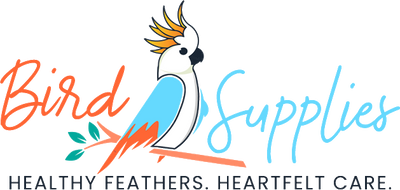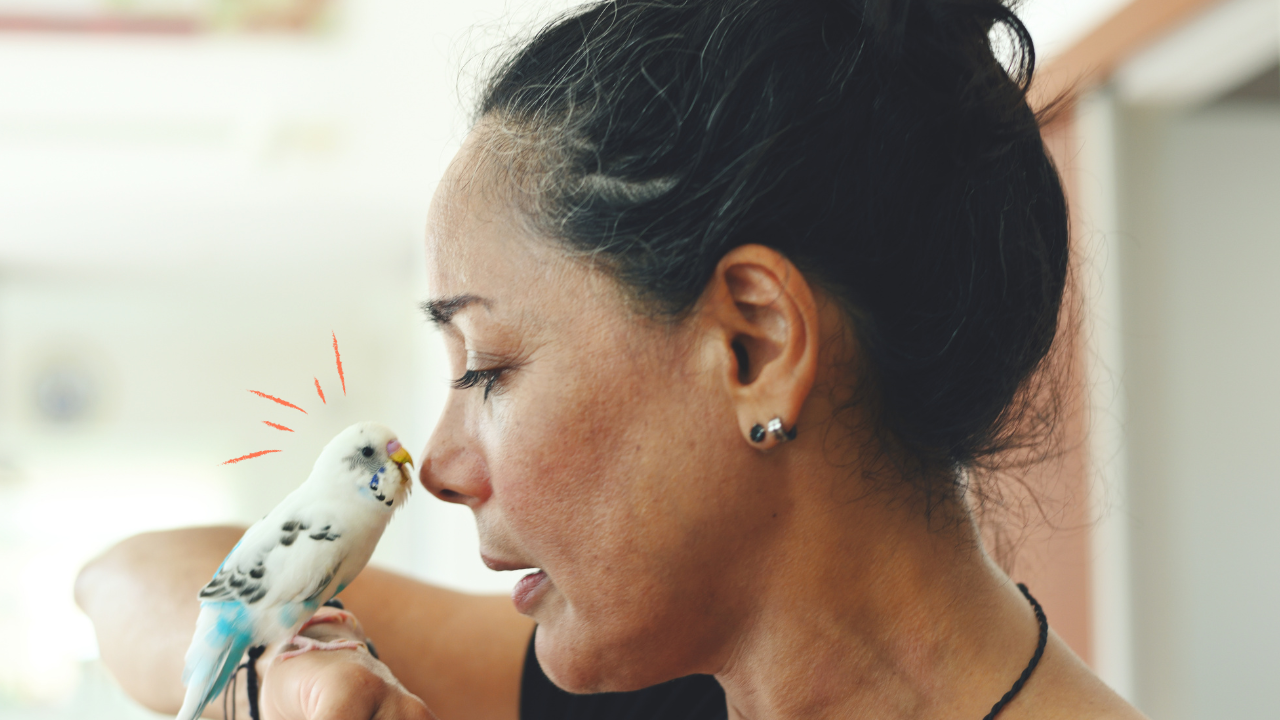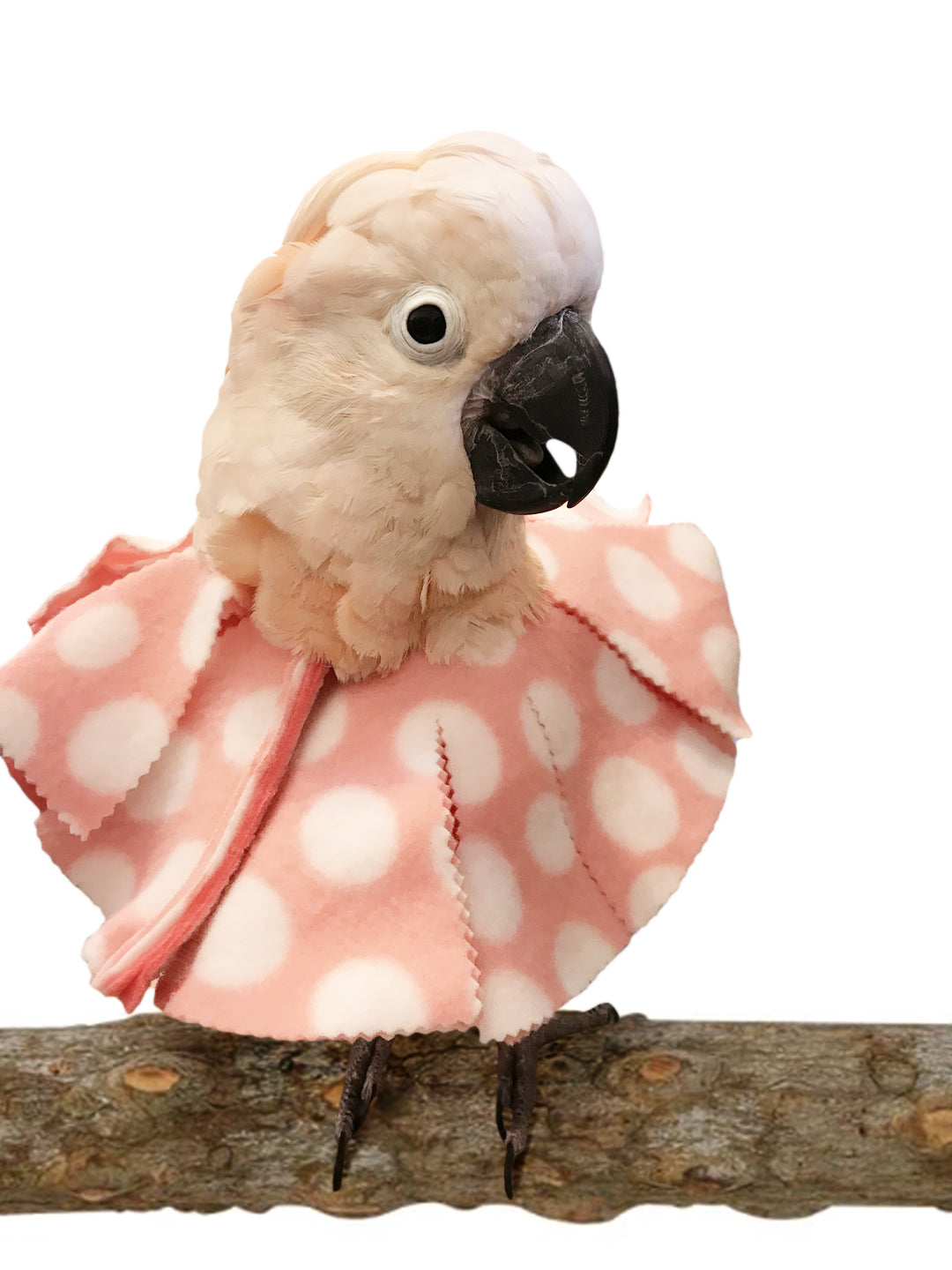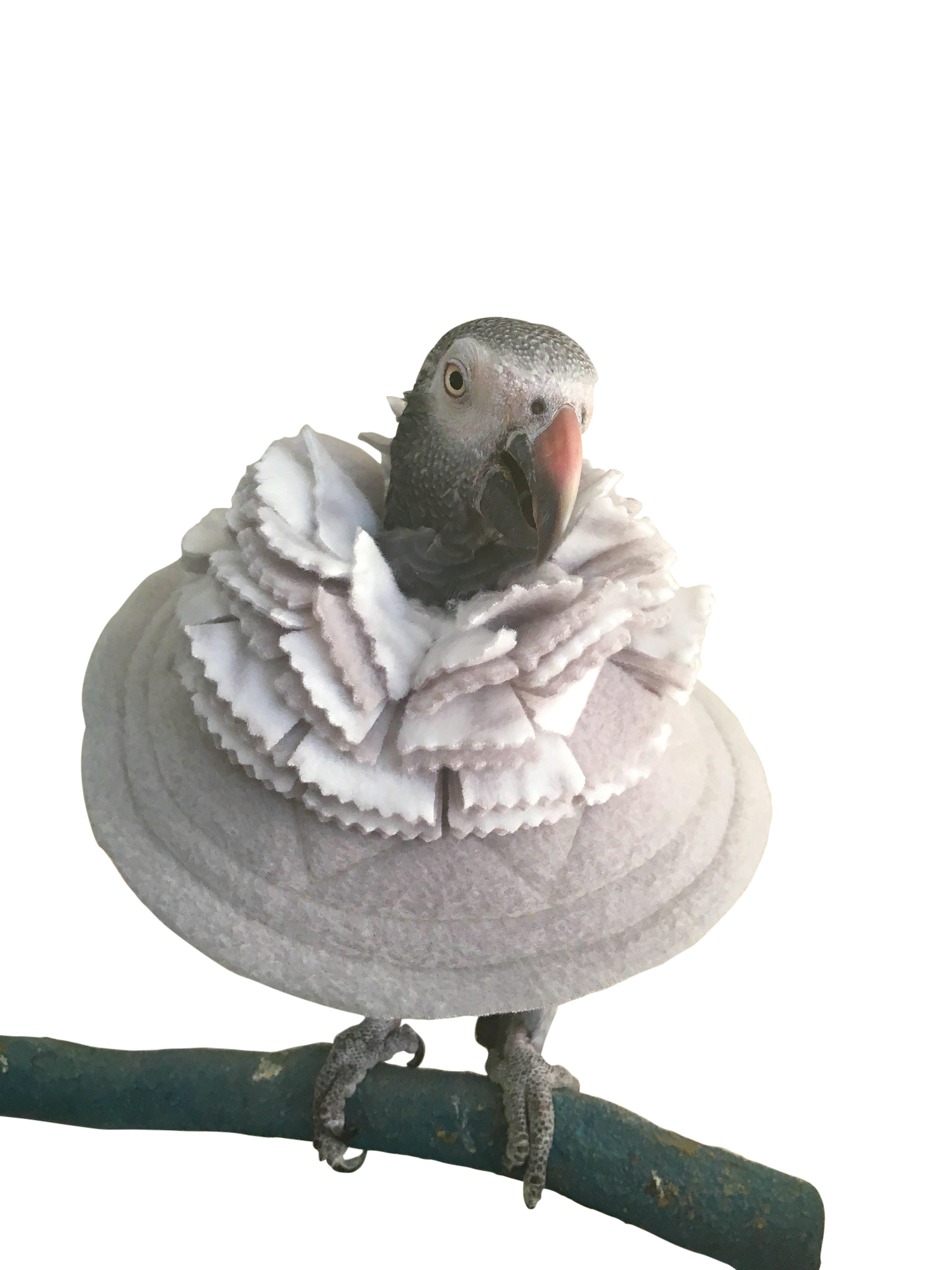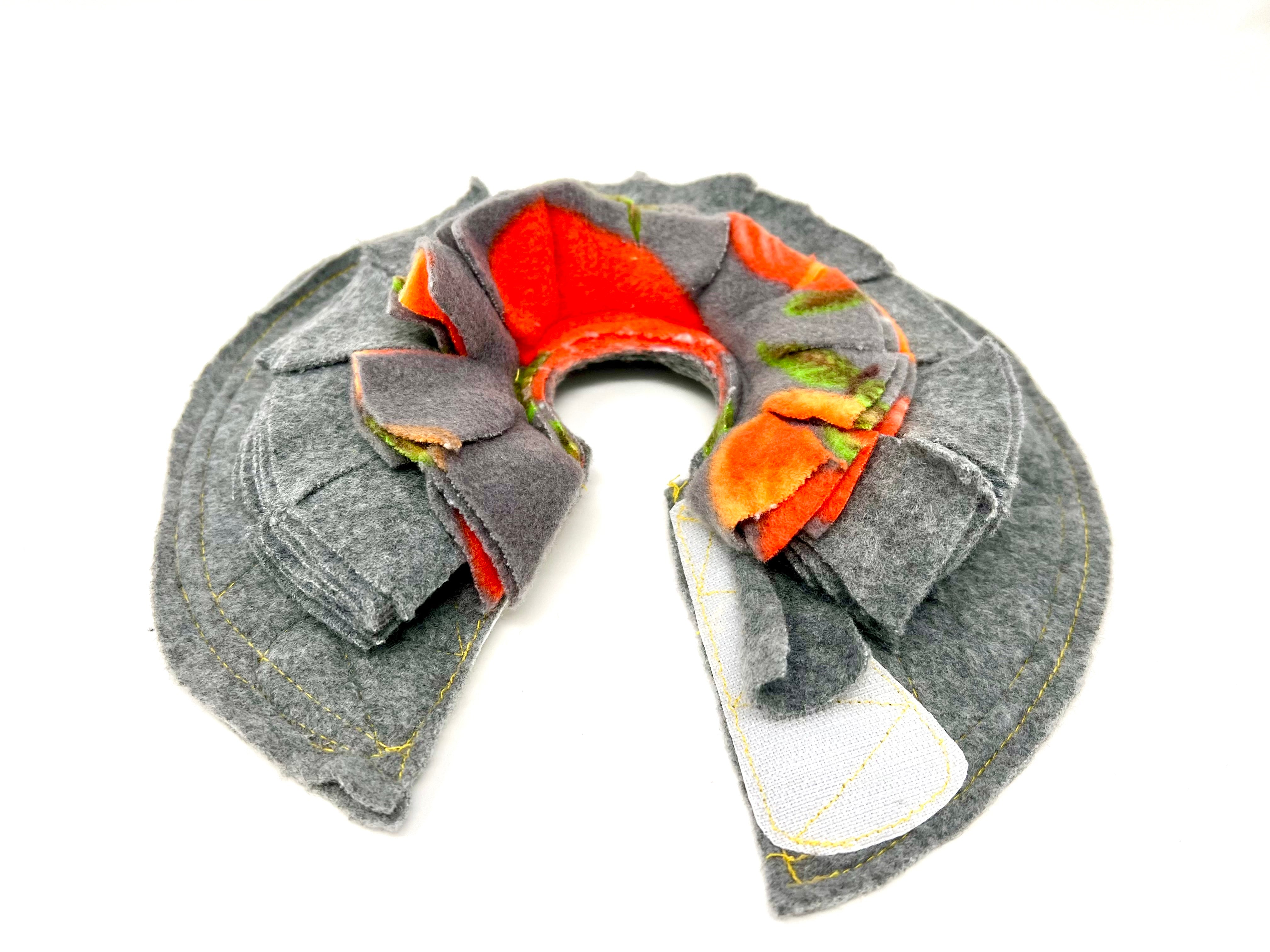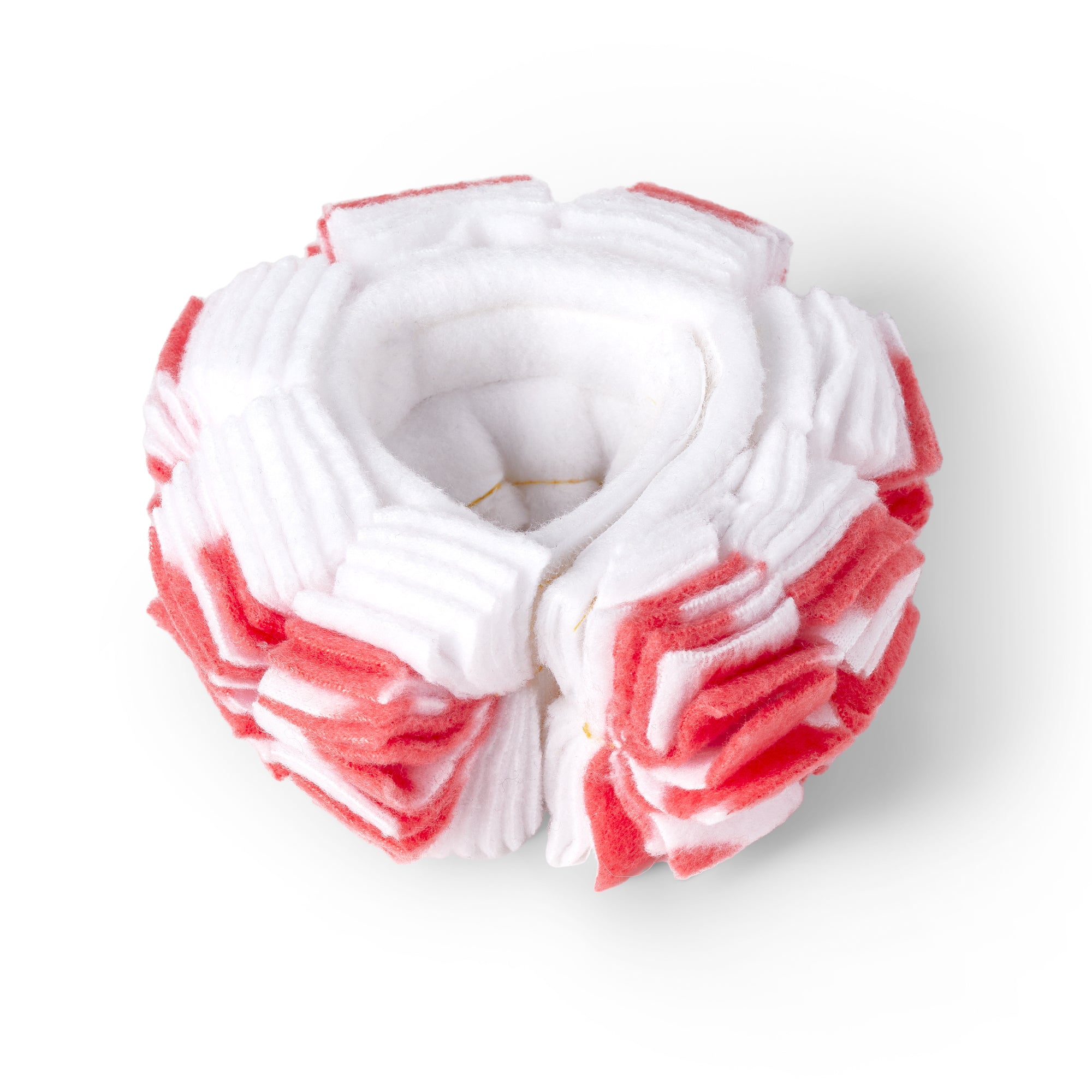By Diane Burroughs
Table of Contents
- What are the benefits of positive reinforcement bird training?
- What is positive reinforcement training in birds?
- When is negative reinforcement used in bird training?
- When is punishment effective in bird training?
- What is "capturing the behavior?"
- What does shaping behavior with approximations mean?
- How to use positive reinforcement without errors
- Case studies
- Resources
Are you interested in learning how to successfully train your pet bird using positive reinforcement? If so, you've come to the right place! Positive reinforcement is an effective and popular method for training birds, and can help build a strong bond between bird and owner.
With the right approach, you can unlock the secrets of successful bird training using positive reinforcement, leading to better behavior from your pet bird and a happier home for all. In this blog post, we'll discuss the basics of positive reinforcement and provide tips on how to make it work for your bird. Let's get started!
What are the benefits of positive reinforcement bird training?
Positive reinforcement bird training has numerous benefits for both your bird and you, the owner. This method of training focuses on rewarding desired behaviors rather than punishing unwanted ones. By using positive reinforcement, you can create a more positive and enriching environment for your bird, leading to a stronger bond between you and your feathered friend.
One of the key benefits of positive reinforcement bird training is that it allows for effective communication between you and your bird. Birds are intelligent creatures that can learn to associate specific actions with rewards. Through positive reinforcement, you can teach your bird a wide range of behaviors, from simple commands like "step up" to more complex tricks and games.
Another benefit is that positive reinforcement bird training helps to build trust and strengthen the bond between you and your bird. When your bird associates you with positive experiences, such as treats or praise, it is more likely to feel comfortable and secure in your presence.
Using positive bird training methods enhances your bird's mental health. And, what's more, it works with all aged birds, from chick to senior. Plus, it works with re-homed and previously abused birds.
Positive reinforcement bird training also provides mental stimulation for your bird. By engaging their mind and encouraging them to think and problem-solve, you can help prevent boredom and associated negative behaviors such as screaming or feather plucking.
In addition, positive reinforcement bird training can be a fun and rewarding experience for both you and your bird. It allows you to interact with your bird in a positive and meaningful way, fostering a deeper understanding and connection between you.
Overall, positive reinforcement bird training offers numerous benefits, including improved communication, trust-building, mental stimulation, and a more enjoyable relationship between you and your feathered companion. By using this method, you can unlock the secrets of successful bird training and create a happier and healthier home for both you and your bird.
So, what are you waiting for? Let's get started!
What is positive reinforcement training in birds?

Positive reinforcement training is a highly effective method for teaching and training birds, including parrots. It works well with all animals, domestic and zoo animals. This method of animal training has tons of research to back it up. When used correctly, it is a relatively fast method for bird training and it works for training simple to complex behaviors.
It involves using "rewards" to reinforce desired behaviors, which encourages the bird to repeat those behaviors over and over. A reward is anything that motivates your bird. Many animals are motivated by treats. Others are motivated by attention and praise.
A traumatized animal, such as a bird that has been rehomed, an overly anxious bird or an overly aggressive one, may be motivated by you backing off until it learns that you are safe to be around. Once these birds reliably and safely allow you to come close enough to administer a treat you can slowly introduce more conventional rewards.
How to train your bird
Positive reinforcement (+P) focuses on the positive aspects of training, rather than using punishment or force. So, rather than scolding or scoffing at unwanted behavior, you train yourself to recognize any effort by the bird to perform the desired behavior. By using positive reinforcement, you can create a nurturing and positive learning environment for your bird.
In positive reinforcement training, you identify the behaviors you want your bird to learn, such as:
- How to train your bird sit on your hand
- How to train you bird to go on your finger
- How to train your bird to not fly away
- How to train your bird to come to you when called
- How to stay on it's play stand
Then, you reward your bird with something that it finds rewarding, such as a treat, verbal praise, or a favorite toy, whenever it displays the desired behavior. This helps the bird associate the behavior with the reward and motivates it to perform the behavior more frequently.
When practicing positive reinforcement training, consistency is key. It's important to reward the desired behavior every time it occurs, at least initially, to reinforce the association between the behavior and the reward. As your bird becomes more proficient, you can gradually reduce the frequency of rewards while still providing occasional reinforcement.
Keep in mind that each bird is unique, and it's essential to be patient and tailor your training methods to suit your bird's individual needs and preferences. By using positive reinforcement techniques, you can establish trust and understanding, paving the way for a strong and loving relationship with your bird.
Unlocking the secrets of successful bird training using positive reinforcement involves understanding basic terminology. I'll provide a definition of the terminology and a case example. But, the best way to have a term "sink in" is to practice the method and watch for the results.
Primary Reinforcer: A primary reinforcer is a reward that is innately satisfying to the bird, such as food, water, or a desired toy. These rewards tap into the bird's basic needs and desires, making them highly effective motivators in positive reinforcement training. By offering a primary reinforcer immediately after the desired behavior, you reinforce the behavior and increase the likelihood of it being repeated in the future.
A case example of using a primary reinforcer with a bird is offering a treat every time the bird successfully steps up onto your hand. Over time, the bird will associate stepping up with receiving the treat, making it more likely to perform the behavior in the future.
Secondary Reinforcer: A secondary reinforcer is a reward that has been paired with a primary reinforcer and has acquired its reinforcing properties through association. This can be anything that the bird has learned to find rewarding, such as verbal praise, a specific gesture, or the sound of a clicker. Secondary reinforcers are effective because they provide immediate feedback to the bird, signaling that it has performed the desired behavior correctly and will receive a primary reinforcer as a reward shortly.
Using a secondary reinforcer in bird training involves consistently pairing it with a primary reinforcer. For example, every time your bird performs the desired behavior, you can follow it with a click sound from a clicker, indicating that a treat will be given as a reward. Over time, the bird will associate the clicker sound with receiving the treat, and the clicker alone will become a powerful secondary reinforcer.
Cue: A cue is a signal or command that tells your bird what behavior you want it to perform. A cue can be verbal, visual, or tactile, and should be consistent and clear. To establish a cue, you must first teach the desired behavior using positive reinforcement, and then consistently pair the behavior with the cue.
For example, if you want your bird to step up onto your hand when you say "step up," you should first use positive reinforcement to train it to step up. Once the behavior is consistent, begin using the cue "step up" every time you want the bird to perform the behavior. Over time, the bird will associate the cue with the desired behavior and will perform the behavior on command.
Using a target stick is also a type of cue. Target sticks provide a visual cue by pointing to the area that you want your bird to pay attention to. For example, if you want it to place a coin in a bank, you could point to the coin. Both clickers and target sticks have to be front loaded by clicking and treating and pointing and treating. Each time you click or point offer a treat. The bird will associate these tools with a reward. For the target stick, you'll want to begin treating when your bird touches the end of the stick.
Bridge: A bridge is a sound or signal that marks the exact moment when the desired behavior is performed. It acts as a bridge between the behavior and the reward, providing immediate feedback to the bird. A bridge can be a verbal cue, such as saying "good" or "yes," or a click sound from a clicker. The bridge is important because it helps to reinforce the connection between the behavior and the reward, making it clear to the bird what it is being rewarded for.
To use a bridge effectively, you must first teach your bird to associate the sound or signal with a reward. Start by pairing the bridge with a primary reinforcer, such as offering a treat immediately after the bridge. Repeat this process consistently, so that the bird learns to expect a reward every time it hears the bridge. Once the bird has made the association, you can use the bridge to mark the exact moment when the desired behavior occurs, and then follow it with the reward. This helps to clarify to the bird that it has performed the behavior correctly and will receive a reward.
An example of using a bridge in everyday bird training is teaching a bird to fly to your hand on command. You can use a bridge, such as a verbal cue like "fly," to mark the moment the bird takes off and then offer a treat as the reward. This helps the bird understand that it is being rewarded for flying to your hand when it hears the cue.
Negative reinforcement: (+N & -N) In behavior theory, negative reinforcement means taking something away, that causes the bird fear. In other words, you're removing an aversive stimulus when the desired behavior is performed. This is a high level skill that should be used with a bird behaviorist. It is important to approach negative reinforcement with caution and only use it when absolutely necessary and in a controlled and safe manner.
An example of negative reinforcement is when working with with abused or very shy birds that are afraid of people. These birds find it aversive when someone gets too close. In this case, the reward is actually the person backing off and training from afar.
Punishment, or negative reinforcement, on the other hand, should be used sparingly, if at all, in bird training, if at all. While punishment can suppress unwanted behaviors temporarily, it can also lead to fear, stress, and aggression in birds. Punishment destroys any trust that your bird has in you. Once the trust is gone, bird training turns into an uphill battle.

When is negative reinforcement used in bird training?
Negative reinforcement (-N) is a controversial topic in the world of bird training, but it does have its place when used correctly. Negative reinforcement involves removing an unpleasant or aversive stimulus when the bird performs the desired behavior. While positive reinforcement focuses on rewarding desired behaviors, negative reinforcement focuses on removing or avoiding negative consequences.
One reason negative reinforcement may be used in parrot training is to address unwanted behaviors. For example, if your parrot bites or screams, you can use negative reinforcement by withholding attention or interaction until the bird stops the unwanted behavior.
By removing the opportunity for reinforcement, you can discourage the bird from repeating the behavior in the future.
However, it's important to note that negative reinforcement should be used sparingly and in combination with positive reinforcement to teach replacement behaviors.
 |
For successful bird training, never use only negative reinforcement. Combine -N with teaching new skills. Remove the reinforcer for the unwanted behavior & use +R to teach new, replacement behaviors |
Relying too heavily on negative reinforcement can create fear and anxiety in the bird, damaging the trust and bond between you. It's essential to find a balance between using negative reinforcement to address unwanted behaviors and using positive reinforcement to reinforce desired behaviors, if you choose to use -N at all.
In some cases, negative reinforcement may be used as a last resort if other methods have been unsuccessful. It should never be used as a primary training technique or as a means of punishment. The focus should always be on positive reinforcement and creating a positive and enriching environment for your bird.
Case Study: Addressing Feather Plucking and Promoting Healthy Behaviors in a Pet Parrot
Introduction:
Feather plucking is a concerning behavior observed in many captive parrots, which can lead to various health issues and affect their overall well-being. This case study focuses on Polly, a pet parrot engaging in feather plucking, and how a combination of negative reinforcement for undesirable behavior and positive reinforcement for desirable behaviors was implemented to alleviate the issue.
Background:
Polly, a vibrant and sociable parrot, was owned by Lily, who was deeply concerned about Polly's habit of feather plucking. Polly exhibited this behavior primarily when she felt bored or isolated in her cage. Feather plucking not only compromised Polly's appearance but also posed potential health risks due to the exposure of her skin. To address this, Lily sought a solution that would promote Polly's mental and physical health while discouraging the feather plucking behavior.
Intervention:
Lily decided to apply a two-pronged approach involving negative and positive reinforcement. Whenever Polly engaged in feather plucking, Lily refrained from providing any attention or reaction. This absence of attention acted as a form of negative reinforcement, making the feather plucking behavior less rewarding for Polly. Simultaneously, Lily introduced a range of stimulating and rewarding activities for Polly. When Polly engaged in behaviors such as whistling, foraging for hidden treats, and playing with toys, Lily provided positive reinforcement through praise and treats.
Results:
Over time, the combination of negative and positive reinforcement had a significant impact on Polly's behavior. Polly began to associate feather plucking with a lack of attention and gradually reduced this behavior. In contrast, she started displaying increased interest in the positive-reinforcement activities. Polly learned that engaging in activities like whistling and foraging led to pleasant interactions with Lily and delicious treats, replacing the need for feather plucking.
Conclusion:
This case study demonstrates the effectiveness of using a combination of negative reinforcement to discourage undesirable behavior and positive reinforcement to encourage healthy alternatives. Polly's transformation from a feather-plucking parrot to a more engaged and content companion highlights the importance of understanding an animal's motivations and utilizing reinforcement techniques to shape their behavior positively. This approach not only improved Polly's quality of life but also serves as a valuable example for addressing similar behavioral issues in captive parrots.
Remember, every bird is unique, and what works for one may not work for another. It's essential to understand your parrot's individual needs, preferences, and limitations when deciding to use negative reinforcement in their training. Always prioritize their well-being and strive for a training approach that promotes trust, cooperation, and a strong bond between you and your feathered friend.
When is punishment effective in bird training?
When it comes to parrot training, punishment is a topic that often stirs up controversy. While positive reinforcement is generally the preferred method, there are instances where punishment can be effective if used appropriately.
For example, if your parrot consistently engages in dangerous behavior, such as biting or aggressive behavior, it may be necessary to use punishment as a means of discouraging that behavior.
 |
"Punishment" in this training process is removing the reinforcer for unwanted behavior. It is NOT abusing the bird with yelling or hitting. If you always give your bird attention when it plucks, remove the attention for plucking while introducing attention for new, replacement behaviors, like playing with toys or foraging. |
Another situation where punishment can be effective is in addressing persistent and unwanted behaviors. For example, if your parrot constantly screams for attention, "punishment" can be used to help deter this behavior. When attention is withdrawn for an unwanted behavior, you must reinforce wanted or desired behaviors with attention.
It's crucial to keep in mind that punishment should never be the go-to method for parrot training. The use of punishment should always be balanced with positive reinforcement to maintain trust and build a strong bond between you and your parrot. Consistency and clear communication are key when implementing punishment in parrot training, ensuring that it is used sparingly and in combination with positive reinforcement techniques.
What is "capturing the behavior?"
Capturing the behavior is a fundamental concept in positive reinforcement bird training. It involves recognizing and reinforcing spontaneous behaviors exhibited by your bird without any specific training or cues from you. Essentially, you "capture" the behavior as it naturally occurs and then reward it, encouraging your bird to repeat it in the future.
Capturing the behavior is all about being observant and ready to reward your bird when it displays a desired behavior on its own. For example, if you notice your bird voluntarily stepping up onto a perch or singing a specific tune, you can immediately offer a reward such as a treat or praise to reinforce that behavior.
This method is particularly effective for shaping desired behaviors that are more difficult to train using traditional methods. It allows you to take advantage of your bird's natural inclinations and instincts, making the training process more enjoyable for both of you.
To successfully capture behaviors, it's important to have treats or rewards readily available and be prepared to reinforce the behavior as soon as it happens. This instant reinforcement helps your bird associate the behavior with the reward, strengthening the likelihood of it being repeated in the future.
 |
Always be mindful about what behaviors you are reinforcing with your attention. |
Remember, capturing the behavior requires patience and keen observation. It may take time for your bird to display the specific behavior you're looking for, so be ready to reward even small steps toward the desired behavior. By consistently capturing and reinforcing positive behaviors, you can encourage your bird to engage in more desirable actions and build a strong foundation for further training.
What does shaping behavior with approximations mean?
Shaping behavior with approximations is a powerful technique used in positive reinforcement bird training. Essentially, it involves breaking down complex behaviors into smaller, achievable steps and rewarding each step along the way. By gradually shaping and reinforcing these approximations, you can guide your bird toward the desired behavior.
Let's say you want to teach your bird to wave its wing on command. You start by observing when your bird naturally lifts its wing, even if it's just slightly. When you see this, you immediately offer a reward, such as a treat or verbal praise. This reinforces the behavior and encourages your bird to lift its wing higher next time.

As your bird becomes more comfortable and confident with the initial approximation, you raise the criteria slightly. Now, you only reward when your bird lifts its wing a little higher than before. With each repetition, you continue to raise the criteria, rewarding closer and closer approximations to the final behavior.
This process of shaping behavior with approximations requires patience and consistency. It's important to break down the behavior into small steps that your bird can understand and successfully perform. By rewarding each approximation, you create a positive and rewarding learning experience for your bird, making it more likely to continue progressing toward the final behavior.
Remember, shaping behavior with approximations is all about reinforcing small successes and gradually building up to the desired behavior. With practice and dedication, you can use this technique to teach your bird a wide range of impressive and entertaining behaviors, creating a deeper bond and a more fulfilling relationship between you and your feathered friend.
How to use positive reinforcement without errors
Positive reinforcement is a powerful tool for training your pet bird, but it's important to use it correctly to avoid any errors that could hinder progress. Here are some tips on how to effectively use positive reinforcement without making common mistakes:
1. Be consistent: Consistency is key when using positive reinforcement. Make sure to reward your bird every time it displays the desired behavior, at least in the beginning stages of training. This helps reinforce the association between the behavior and the reward.
2. Timing is everything: Timing is crucial when using positive reinforcement. It's important to reward your bird immediately after it performs the desired behavior. The faster you "click" the behavior the faster your bird make the connection between the reward and the behavior.
3. Use the right rewards: Different birds have different preferences when it comes to rewards. Some birds may be motivated by treats, while others may prefer verbal praise or a favorite toy. Experiment with different rewards to find out what works best for your bird.
4. Gradually reduce rewards: As your bird becomes more proficient in the desired behavior, you can gradually reduce the frequency of rewards. Instead of rewarding every time, you can start rewarding every other time, then every third time, and so on. This helps maintain motivation while still reinforcing the behavior.
5. Stay patient: Training takes time and patience. Your bird may not grasp the desired behavior right away, and that's okay. Stay patient and continue to reinforce small steps towards the behavior you're trying to achieve.
By following these tips, you can use positive reinforcement effectively and avoid any errors that may hinder your bird's training progress. Remember, every bird is unique, so be adaptable and cater your training approach to your bird's individual needs and preferences. Happy training!
Case studies
Case Study #1
In this case study, we'll explore the inspiring journey of Sarah and her African Grey parrot, Charlie. Sarah had always wanted to have a strong bond with Charlie and train him to perform tricks. However, she wasn't sure where to start and was afraid of using negative reinforcement or punishment methods.
That's when she discovered the power of positive reinforcement training. Sarah began by researching and educating herself on positive reinforcement bird training techniques. She learned about the importance of consistency, timing, and using the right rewards. With this knowledge in hand, she was ready to embark on her training journey with Charlie.
She started with simple commands like "step up" and "turn around," rewarding Charlie with his favorite treat each time he successfully performed the behavior. Sarah made sure to reward Charlie immediately after the behavior to reinforce the positive association.
As Sarah and Charlie progressed, they moved on to more complex tricks like playing dead and waving his wings. With patience and persistence, Charlie started to master these behaviors, bringing immense joy to both Sarah and himself.
Through positive reinforcement training, Sarah was able to build a strong bond of trust and understanding with Charlie. He became more attentive and eager to learn new behaviors. The training sessions became a fun and rewarding experience for both of them, strengthening their relationship.
Sarah's success with positive reinforcement training is a testament to the effectiveness of this approach. With consistency, patience, and the right techniques, anyone can unlock the secrets of successful bird training and create a deep bond with their feathered friend. So why not give it a try and see the magic unfold with your own pet bird?
Case Study #2
In this fascinating case study, we'll dive into the incredible journey of Mark and his lovebird, Mango, whom he acquired at a pet store. Mango was afraid of hands. Mark had always dreamed of training Mango to perform unique tricks and behaviors, but he didn't know where to start. That's when he stumbled upon the power of positive reinforcement training, and his world changed forever.
Mark began his training adventure with Mango by researching various positive reinforcement techniques and studying the specific needs and preferences of lovebirds. Armed with this knowledge, he was ready to tackle the training process head-on. Starting with a simple commands like "remaining calm during feeding time" and then "stepping up," Mark patiently rewarded Mango with calm, gentle movements, a calm voice and whistle, and his favorite treats every time he successfully executed the desired behaviors.
By using consistent and immediate rewards, Mark reinforced the positive association between the behavior and the reward. As the weeks went by, Mark and Mango progressed to more complex tricks, such as riding on his shoulder and being transported to a play stand. With each new achievement, Mark showered Mango with praise and rewards, building a strong bond of trust and understanding.
Through positive reinforcement training, Mango's confidence soared, and his intelligence shone bright. The once shy lovebird transformed into a "birdy buddy." Mark's experience with positive reinforcement training showcases the amazing potential for growth and connection between bird and owner, even with frightened birds.
With patience, dedication, and the right approach, anyone can unlock the secrets of successful bird training and create a profound and loving bond with their feathered companion. So, why wait?
Begin your own positive reinforcement journey today, and watch as your bird's potential unfolds before your eyes. The possibilities are endless, and the rewards are immeasurable. Happy training!
Resources:
Are you eager to dive deeper into the world of positive reinforcement bird training? We've got you covered with a list of valuable resources that can help you further enhance your skills and knowledge. Whether you're a beginner or an experienced bird trainer, these resources offer a wealth of information and tips to help you unlock the secrets of successful bird training using positive reinforcement.
1. Books: Expand your understanding of positive reinforcement bird training with books written by experts in the field. Some recommended titles include "The Click That Does the Trick" by Dr. Jeannine Berger, "The Bird School" by Dr. Anne Wissman, and "Getting Started: Clicker Training for Birds" by Melinda Johnson.
2. Online Communities: Join online forums and social media groups dedicated to positive reinforcement bird training. These communities provide a platform for bird owners and trainers to share experiences, ask questions, and receive support. Some popular online communities include the "Positive Reinforcement Bird Training" group on Facebook and the "Avian Clicker Training" forum.
3. Training Courses: Enroll in online courses or workshops that offer in-depth training on positive reinforcement bird training. Courses like the "ABCs of Parrot Training" by Bird Tricks and "Clicker Training for Birds" by Animal Training Academy can provide you with practical knowledge and hands-on techniques.
4. Professional Trainers: Consult with professional bird trainers who specialize in positive reinforcement methods. They can provide personalized guidance, tips, and advice based on your bird's individual needs and challenges.
Remember, learning is a continuous process, and there is always more to discover and explore when it comes to positive reinforcement bird training. Utilize these resources to expand your knowledge, refine your techniques, and continue building a strong bond with your feathered companion.
Happy training! 😀 🦜
Related posts
10 Tips for Calming A Bird Using Positive Reinforcement
Using Positive Reinforcement to Stop Feather Plucking
6 Easy Ways To Train Your Bird With Positive Reinforcement
How a Bird Behaviorist Can Help You Use Positive Reinforcement The Right Way
Diane Burroughs, LCSW is a licensed psychotherapist trained in ABA therapy techniques. She specializes in avian anxiety disorders and is certified in Nutrition For Mental Health. Diane has written a number of bird behavior books and she offers behavior consultations. She's developed a range of UnRuffledRx Science-backed Parrot Wellness Supplies.
Diane's products have been featured in the Journal of Avian Medicine and Surgery and at Exoticscon, a conference for exotic pet veterinarians. Her bird collars & supplements are stocked in avian vet clinics and bird stores throughout the US. With over 30 years in the field of behavior, Diane has created thousands of successful individualized behavior plans that help pets thrive.
TAGS: #BirdTraining #PositiveReinforcement
SHARING IS CARING! PLEASE SHARE ON YOUR FAVORITE SOCIAL MEDIA NOW!
